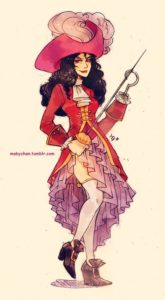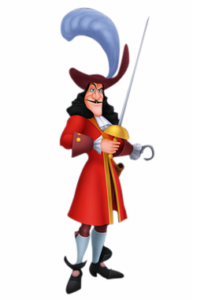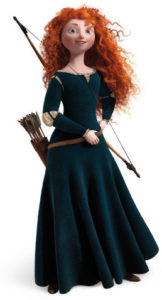“Are you a he/she?”
“Umm…a what?”
“You know! A he/she? A boy and a girl.”
“No. I don’t think so…I just have a deep voice I guess.”
“Oh. You look like a he/she.”
When I was in elementary school, other children had no idea how to label me. I dressed how they saw boys dress: in basketball shorts, baggy t-shirts, and tennis shoes. My hair was always in a ponytail. I have a deep voice, but my name is Ashley, and the teacher used feminine pronouns. Therefore, the only logical solution is that I was a “he/she.” Fifth grade logic never fails, folks.


What my fellow classmates never fully understood was that I identified more with boys. As a matter of fact, I often thought about whether I should have been born a boy. This internal struggle I experienced takes its root for me in Disney princess movies. Some girls wanted to be the princess, but I wanted to be the prince. The swords, clothes, and dragon-slaying were empowering, but in the end, I wanted my happily ever after to be with a girl. When I look back on my fifth grade memories, I realize how, even in childhood, we are drowning in gender expectations.
As a way to combat our early socialization of gender through Disney movies, some artists are taking our favorite Disney characters and “bending” their gender.
Children begin to identify and distinguish between gender by the age of 2 or 3. At this age, children start to question what is feminine and what the roles associated with “feminine”are (i.e., if Cinderella is a “girl,” then “girls” should look beautiful, sing, and clean floors). For years, it was considered “normal” or “healthy” for a child’s gender identity to align with their biological genitalia. For example, a “healthy” child with a vagina should identify as “female,” as a girl.


As a culture, we believe in this idea so much that we give a “disorder” diagnosis to the children who begin to question whether they really identify with the gender assigned to them at birth. The Diagnostic and Statistical Manual of Mental Disorders calls this “Gender Identity disorder” or “gender dysphoria” and it is still diagnosed to this day.
This diagnosis is incredibly problematic. There are women who have penises and men who have vaginas. If we speak about gender in chromosomes, there are many combinations (ie. XXY, XYY, XXYY, XX, XY), and, 1 in 1,666 children are born intersex. Hormone levels, sexual organs, and secondary sex characteristics vary even more than chromosome pairs.
“Biological sex” is not as binary or as straightforward as we are taught to believe. Our society tries so hard to make gender binary that we surgically alter a baby’s genitalia, sometimes without the parents’ knowledge or consent. This is extremely destructive to a child and can cause psychological, social, and physical trauma.
However, the idea of “gender” is being questioned more and more. Whether it is by our transgender community or gender theorists such as Judith Butler, we are changing our society’s view of gender.


Gender is a social construction that can be divided into four parts: Gender Assignment, Gender Identity, Gender Attribution, and Gender Roles. Kate Bornstein, author of Gender Outlaw and a transsexual woman, will help us define these terms. Gender Assignment is when a culture says, “This is what you are.” In our culture, this assignment is made by a doctor and is based on external genitalia. Gender Identity is when you ask yourself, “Who am I?” This decision is made by all of us and is influenced by our society, particularly by family and the media. Gender Attribution is when you look at someone and say, “That’s a man” or “That’s a woman.” This assumption is generally based on physical or behavioral cues. Finally, Gender Role answers the question, “How do I need to function so that society perceives me as belonging or not belonging to a specific gender?” These roles are crafted and reinforced by society through punishment and rewards. For example, an individual who identifies as transgender or gender non-conforming is murdered every two days. This is a punishment for not following the Gender Role assigned to us.
Gender is a social script we are handed the moment we are born. The script tells us how to speak, walk, and dress. Gender is a performance that is continuous, repetitive, and reinforced in such a way we believe it is “natural.” As Simone de Beauvoir famously stated, “One is not born, but rather becomes, a woman.”
It is crucial, as children begin to explore their own gender identity, that we react positively and allow our own ideas about gender be called into question. Seeing my favorite Disney characters reimagined would have changed my five-year-old self’s perception of gender roles and allow me to feel more comfortable with my own identity. Disney gender bending challenges children to see gender in a new light, rather than in the way society teaches us to see it, and helps them have two truly magical abilities: to celebrate and to support transgender and gender nonconforming individuals.
Yes: two people can dress in a rabbit suit… but why does the female rabbit have to look sexy? Neither are really rabbits, but we can still tell which one is a girl rabbit even if a guy is wearing her costume.
No: you cannot tell which one is the rooster and which one is the hen until one of them crows. Yet, people want to know who I am before they speak to me… it means that they will approach me differently depending on who I am. And that is a problem. For they want to know me within the context of sex. Now, even if I am ambiguous in how I dress, that will also change how they approach me. Problem is not solved. merely confirmed as such.